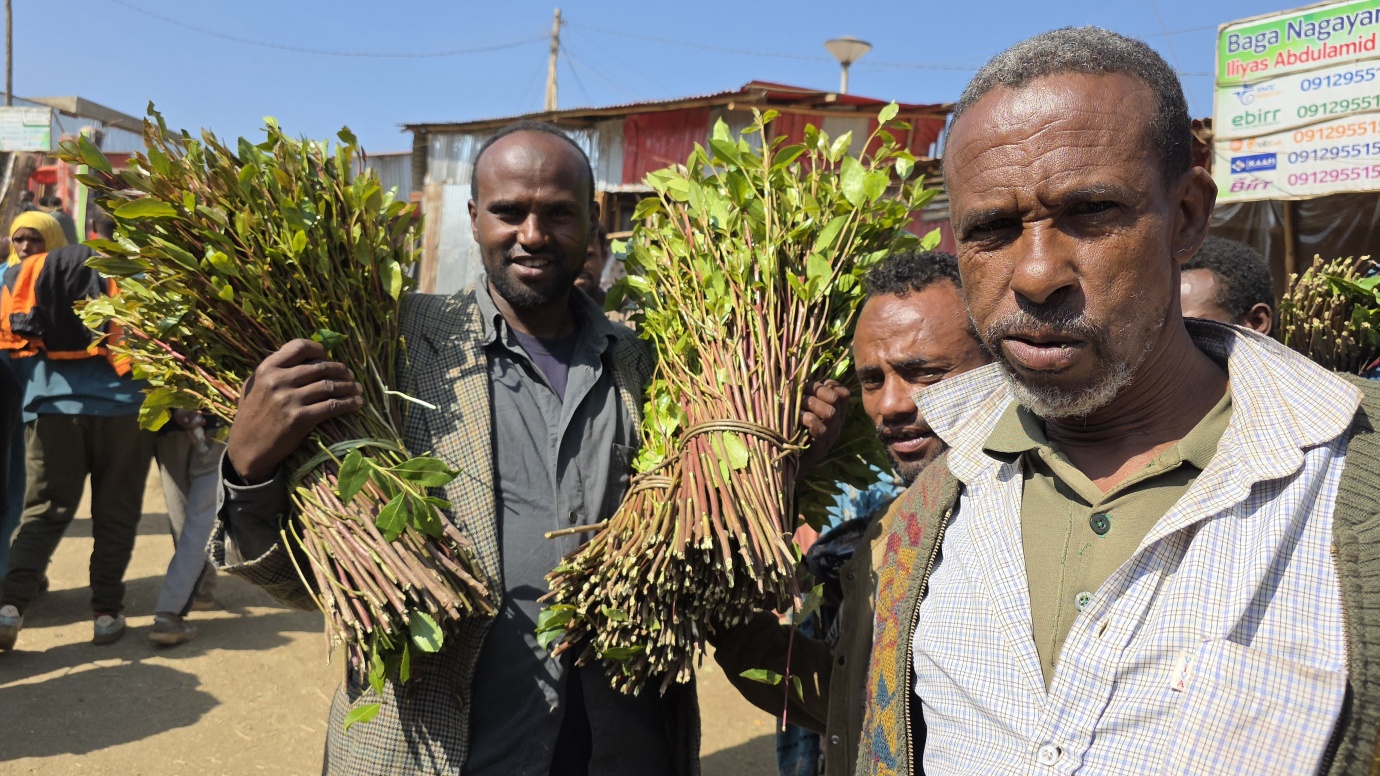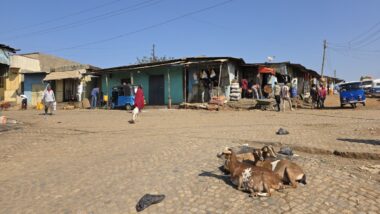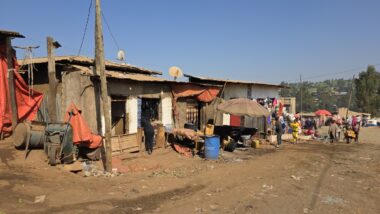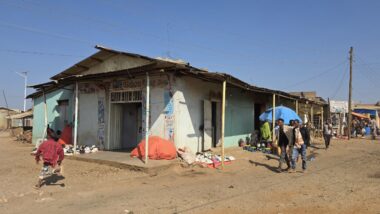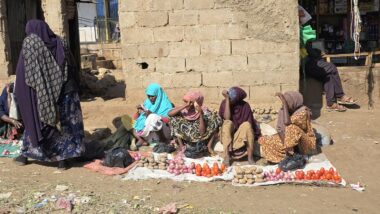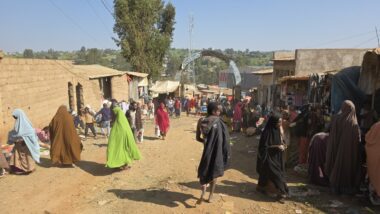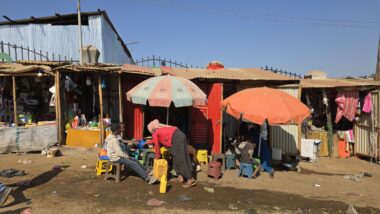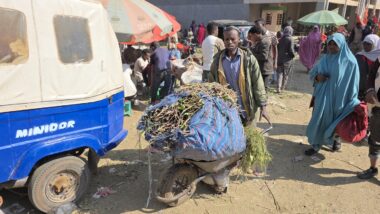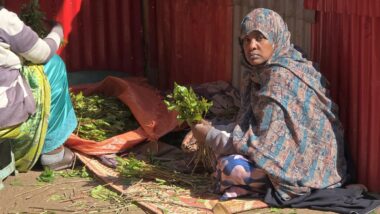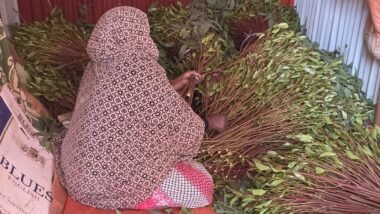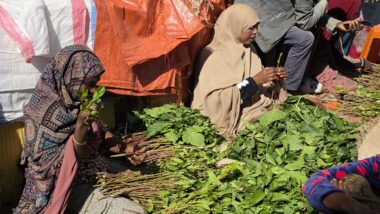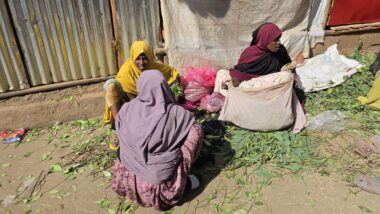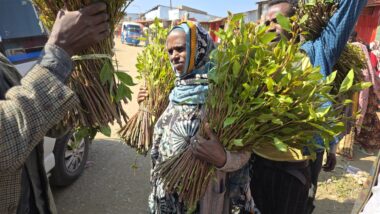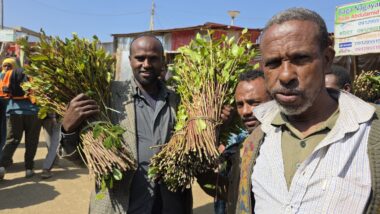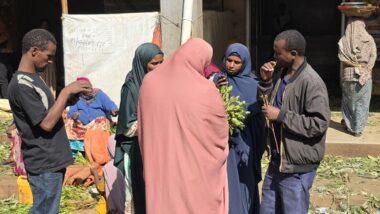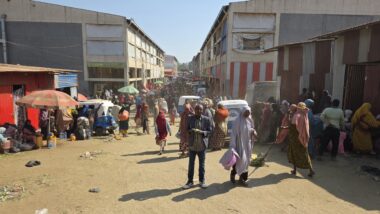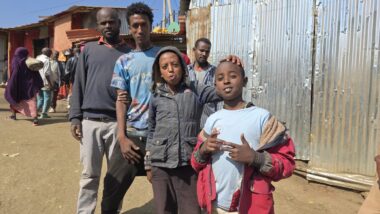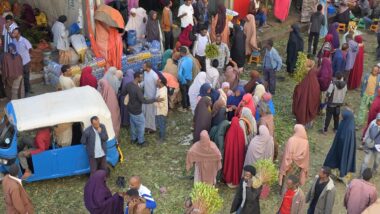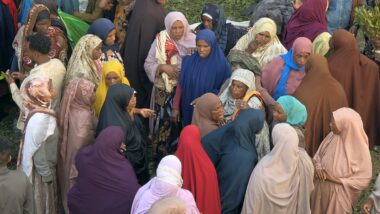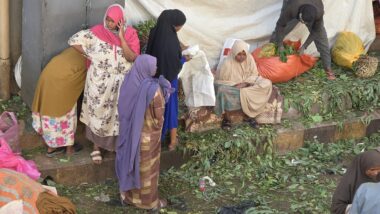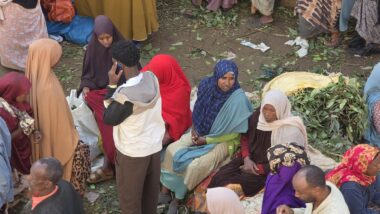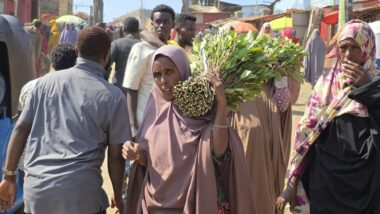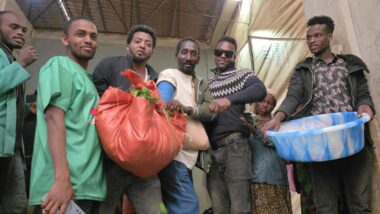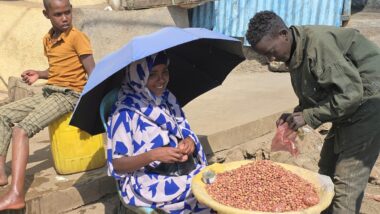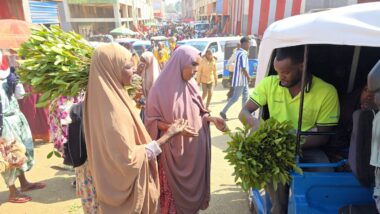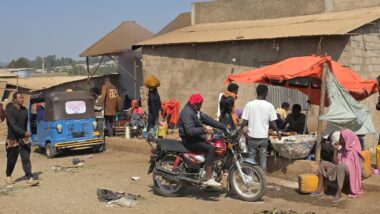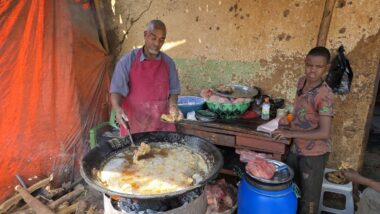On our way back to Awash, we made a short stop in Aweday, often referred to as the “khat capital of the world”. Here is located the world’s largest vibrant and bustling market for this cash crop, with trade 24 hours a day and trucks leaving for destinations such as Djibouti and Somaliland. It is heavily used in this region, and we witnessed how the towns and society transform throughout the day, simply because of the heavy chewing of “magic” leaves. The price of khat in Ethiopia varies significantly by quality, ranging from as low as 35 ETB to 1,000 ETB or more per bundle/unit, depending on the grade, freshness, and market conditions. High-quality khat, often referred to by local names such as “Awoday” or “organic varieties,” is considerably more expensive due to its potency and desirability.
Khat (Catha edulis), known locally as “Jimaa”, is a flowering plant native to East Africa and the Arabian Peninsula, where its leaves and young shoots are traditionally chewed as a stimulant drug. The active ingredients, primarily cathinone and its metabolite cathine, are structurally and pharmacologically similar to amphetamines and produce effects such as euphoria and increased alertness.


